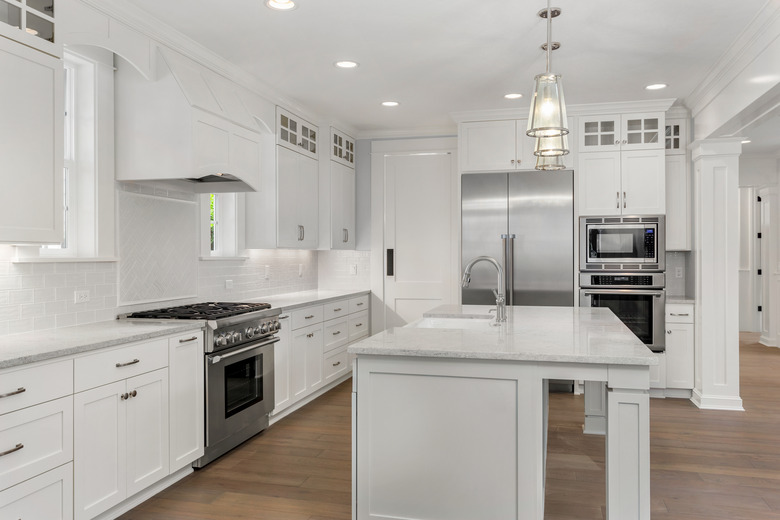How To Fix A Self-Closing Hinge On Cabinets
Self-closing and soft-close hinges are two types of adjustable cabinet hinges. Various screws on the hinge can be loosened or tightened in order to change the position of the door. Therefore, if your cabinet door is sagging, not closing properly or has a large gap near the hinge, the fix is as easy as grabbing a screwdriver and adjusting the correct screw(s).
Traditional vs. European Hinges
Traditional vs. European Hinges
First, determine what kind of hinge is installed on your cabinet. A traditional hinge has two flat plates and may be partially or fully visible. To adjust this type of hinge, loosen the correct screws and push the entire hinge plate in the correct direction before tightening the screw again.
European hinges are concealed on the inside of the cabinet and door, according to Rockler, and they have a special barrel that allows the door's position to be adjusted by simply loosening or tightening the screws within.
Self-Closing Cabinet Hinges Won't Close
Self-Closing Cabinet Hinges Won't Close
Self-closing cabinet hinges that won't close might be poorly adjusted. The cabinet door might overlap the neighboring door, be crooked or sit too far out from the cabinet face. All of these issues could interfere with the hinge's self-closing ability.
The same is true for soft-close hinges, which have a special mechanism (such as a weighted bar or a rounded lip on the hinge) that prevents the door from slamming shut. If your soft close cabinet slams shut, it could be because the door is overlapping the neighboring door and hitting it before the soft-closing mechanism has a chance to fully engage. Or, the door could be set too far out from the cabinet face, shortening the amount of time the soft-close hinge has to slow down the door.
Adjusting Traditional Hinges
Adjusting Traditional Hinges
You can adjust many traditional hinges by loosening the screws that hold it in place and then sliding the hinge plates. However, some hinges are better suited to this method than others. For example, if the screw holes are oval, you can easily slide the loosened hinge from side to side or up and down to get the right fit. Circular screw holes are more rigid and less amenable to adjustment.
If an extreme adjustment is needed, it's best to re-drill the screw holes and completely re-install the hinge. For example, if there is a gap between the door and the cabinet face on the hinge side, the cabinet hinge plate is too far forward. Loosen the screws and push the hinge plate toward the back of the cabinet as far as possible. If this does not sufficiently close the gap, pull the screws out completely, push the plate into the appropriate position, drill new pilot holes and re-attach the screws.
Adjusting European Hinges
Adjusting European Hinges
A European hinge has many screws that can be loosened or tightened to move the entire door vertically, horizontally or in and out. The screws on the door do nothing but connect the hinge to the door, so all of the adjustments will be made on the part of the hinge attached to the cabinet.
If the barrel screws are covered, start by removing the cover to reveal the screws that will adjust the door horizontally and in and out. The screw closest to the door will move the door left and right if loosened or tightened. The screw furthest away from the door will move the door in or out when adjusted. The screws that hold the hinge to the wall of the cabinet will allow the door to move up or down.
It may take some trial and error to comfortably identify the problem screw and to understand whether it needs to be loosened or tightened.
